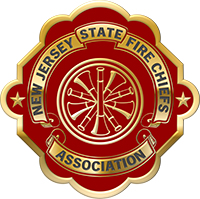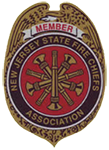National Fallen Firefighters Foundation Life Safety Summit 2022
NFFF SUmmit 2022 - Executive Summary
The National Fallen Firefighters Foundation (NFFF) and the San Antonio Fire Department (SAFD) hosted the National Firefighter Life Safety Summit on September 19 – 22, 2022, in San Antonio, TX. This was the fourth National Firefighter Life Safety Summit hosted by the NFFF. The focus of this Summit was twofold: evaluate the relevance of the NFFF’s 16 Firefighter Life Safety Initiatives and develop strategies to continue the Foundation’s efforts to reduce preventable line-of-duty deaths in the fire service.
This report outlines the recommendations for firefighters, company officers, chief officers, organizations (fire departments and trade organizations), the fire service industry, and researchers. It is evident by the scope of the recommendations that it will be necessary for all aspects of the fire service to address firefighter life safety issues.
The following key recommendations were discussed in multiple breakout sessions. The recommendations below, and those in the summit report, are not in order of priority.
1. Successful organizational culture progress and change must include input from all stakeholders within a fire department, with individuals in leadership positions (formal and informal) leading by example.
2. All members of an organization must have personal accountability and be empowered to contribute to organizational change.
3. Fire service research and data must be presented in a relatable manner to have the most significant influence.
4. Partnerships with non-fire service entities, academic partners, and researchers are vital to improving firefighter health and safety.
5. Researchers, practitioners, and the industry must work together on comprehensive strategies to address behavioral health issues and occupational cancer risks in the fire service.
San Antonio was selected as the summit location at the behest of the San Antonio Fire Chief, Charles Hood. Chief Hood also serves on the board of directors for the NFFF. In 2017, the San Antonio Fire Department experienced a seminal event. Firefighter Scott Deem died, and a second firefighter was critically injured while engaged in firefighting operations at a fire in a gym located in a strip mall. The after-action reports produced by the Texas State Fire Marshal’s Office and the National Institute for Occupational Safety and Health (NIOSH) identified several contributing factors to the death commonly found in many traumatic firefighter fatalities. The SAFD embarked on a path to prevent another tragedy like Firefighter Deem’s death from happening again. Chief Hood offered the full support of the SAFD and the city of San Antonio, suggesting the SAFD tragedy and recovery would serve as a stark reminder to the fire service of how quickly an incident can turn disastrous, and how multiple factors leading up to the catastrophe are hidden in plain sight. It further demonstrates how a department can come together in the aftermath taking corrective action to prevent a reoccurrence, and the importance of transparently sharing the department’s experience with the fire service and potentially avoiding the pain and suffering the SAFD experienced.
The 2022 Summit was initially scheduled to be held in 2019 but was postponed twice due to the coronavirus pandemic. The planning team identified several objectives that contributed to the agenda and attendance at this cycle’s Summit, and these objectives included:
• Framing this Summit around the five major causes of firefighter line-of-duty deaths as identified by the National Institute for Occupational Safety and Health and developing strategies to reduce firefighter injuries and fatalities;
• Include the impact of the coronavirus pandemic, increases in cancer diagnoses, and the need for additional behavioral support in discussions about firefighter health wellness; 5
• Include a breakout group to discuss group dynamics in fire departments and their impact on firefighter safety; and
• Make a concerted effort to include a fair representation of the current and future leaders of the fire service since they will be the groups most affected by the summit recommendations.
The Summit opened with a dinner hosted by the San Antonio Fire Department at the San Antonio Fire Museum on Sunday evening, September 18. Previous Summit attendees were asked to bring at least one emerging leader from their organization. The function at the Fire Museum, located in the SAFD’s former Central Station (a 1938 Works Program Administration project), provided an appropriate historical backdrop and networking opportunity.
Monday, September 19, officially opened the Summit. Nashville Fire Department District Chief Moses Jefferies IV and St. Pete Beach Fire Department District Chief Lindsay Judah served as moderators for the Summit. Foundation representatives and San Antonio officials delivered welcomes and calls to action. NFFF Managing Director Victor Stagnaro provided a historical account of Firefighter Life Safety Summits followed by remarks from Superintendent Eriks Gablicks (on behalf of the U. S. Fire Administrator). Chief Fire Officer Dr. Sabrina Cohen-Hatton (West Sussex Fire and Rescue) provided insight into the United Kingdom’s efforts to build stronger incident commanders through improved decision-making skills. Retired Los Angeles County Fire Captain Joe Woyjeck spoke about the impact of a line-of-duty death from the perspective of a father and firefighter. The Woyjeck family lost their son, Kevin, in the tragic 2013 Yarnell Fire that killed 19 members of the Granite Mountain Hotshots wildland firefighting team.
SAFD Fire Chief Charles Hood presented an emotional account of the tragic 2017 death of SAFD firefighter Scott Deem. Chief Hood’s delivery personalized the depth and effect a line-of-duty death has on the family, fire department, and community.
The attendees received their briefing on the breakout sessions and began their breakout session group. They ended the day with an event featuring two NFFF documentaries, “9/11: 20 Years Later,” and “Go Down Swinging: The Nathan Espinosa Story.”
Tuesday, September 20, provided a second day of presentations and breakout session work. The presentations focused on the successes that can be tied, in part or whole, to the 16 Firefighter Life Safety Initiatives. Duck (NC) Fire Chief and International Association of Fire Chiefs President Donna Black represented the combination/volunteer service, and Orange County (CA) Fire Authority Fire Chief Brian Fennessy presented the career service perspective. Dr. Steve Kerber, Executive
The National Fallen Firefighters Foundation thanks its partners and sponsors for supporting the 4th National Firefighter Life Safety Summit.
Program Partner
Lunch Sponsors
Program Sponsors ®
Grant Funding Provided By
FEMA’s Grant Program Directorate for Assistance to Firefighters Grant Program – Fire Prevention and Safety Grants 6 National Fallen Firefighters Foundation www.firehero.org
Director of UL’s Fire Safety Research Institute, discussed the improved science on fire dynamics and its impact on strategy, tactics, and firefighter safety.
Tuesday afternoon presentations were conducted in a “lightning round format,” with 10-minute deliveries by DoD Fire Chief A.J. Kehl, Fire Investigations/EMS Quality Manager Yvonne Feijoo, Michigan State Fire Marshal Kevin Sehlmeyer, Oakland Fire Battalion Chief Demond Simmons, FDNY Deputy Assistant Fire Chief Frank Leeb, and Pflugerville Fire Chief Nick Perkins on a variety of pertinent topics. Andrea Wilkinson, a health scientist with the National Institute for Occupational Safety and Health, provided an update on the forthcoming National Firefighter Registry firefighter exposure project. Attendees also completed three breakout sessions throughout the day to finalize their recommendations.
Wednesday, September 21, opened with report-outs from the eight breakout groups. Their recommendations are included in the summit report.
The Summit ended with four presentations, including an outcomes report on SAFD firefighter Scott Deem’s death, delivered by SAFD Fire Chief Charles Hood. There were two call-to-action presentations by DoD Fire Chief A.J. Kehl and Vickie Pritchett (Vice President/Executive Officer with the National Fire Sprinkler Association). Then there was a presentation on the critical role science and research play in firefighter health and safety, delivered by Dr. Sara Jahnke, Director and Senior Scientist, Center for Fire, Rescue, & EMS Health Research. NFFF Managing Director Victor Stagnaro provided closing remarks to end the Summit.
The Summit report provides additional information, including more than 100 recommendations.
| Hits: | 785 Hits |


